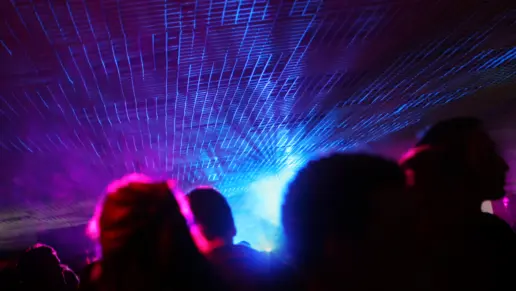Not everyone has heard of the drug 2C-B or its pharmaceutical name, 2,5 dimethoxy-4-bromophenethylamine. Despite the relative lack of name recognition, though, people are misusing it recreationally nationwide as a synthetic party drug to experience psychedelic and stimulant effects that can last up to 12 hours.
When a drug has 2C properties this means it is from the phenethylamine group of drugs which produces stimulant effects in the central nervous system. This study shows that 2C drugs also alter a neurotransmitter in the brain called serotonin which is responsible for regulating moods. When the brain releases too much serotonin, like when taking 2C-B, you may experience hallucinations.
Side Effects and Risks of 2C-B Use
Unpleasant effects and health risks may occur when using 2C-B for a short or long time and can lead to physical and psychological problems. Short-term side effects of 2C-B misuse include the following:
- Dry mouth
- Nausea or vomiting
- Dizziness or drowsiness
- Euphoria
- Anxiety
- Confusion
- Arousal
- Altered perception
- Hallucinations
- Confidence
Effects vary for everyone and certain factors play a role in which side effects appear including gender, weight, whether it is mixed with other prescription or illicit drugs, tolerance, amount of drug and sometimes what is going on in the surroundings at the time. Many reports suggest that 2C-B is not addictive in the same way that substances like opioids or alcohol are. However, you can develop addiction-like symptoms such as:
- Tolerance or needing more of the drug to feel the same effects
- Psychological withdrawal symptoms when you try to stop or cut back on taking the drug
- Using even though doing so damages relationships, work abilities, social ties and financial security.
Like with other drugs, 2C-B causes a high release of feel-good chemicals in the brain. When the high wears off, you want more of the drug to feel good again. Seeking and using the drug will soon take priority in your life and eventually take control.
2C-B Abuse and Street Names
Street names for 2C-B include Nexus, Bromo, Bees, Venus, Toonies, Performax, Synergy and Erox. Other names include 7th Heaven, 7-Up, Blue Mystic, Beautiful, Tripstasy and Lucky 7. It comes in pill, powder and capsule forms and is usually smoked or swallowed.
Answering the “What is in 2C-B?” question can be difficult. As a club drug, many are buying the drug on the darknet where the ingredients and doses of 2C-B are not verified. Fatalities related to this drug are rare but because the drug is not regulated, exposure to the drug or contaminants may lead to serious and potentially life threatening consequences. Many people also choose to mix 2C-B with other hallucinogens, alcohol, or other stimulants and this can significantly increase the health risks.
What Does 2C-B Do?
Using 2C-B affects your body and brain including all your senses. The more you take the less you can control your thoughts and behaviors and the effects can be painful and frightening including:
- Dehydration
- Increase in blood pressure
- Sleep disturbances
- Irregular heartbeats
- Mental health disorders
- Muscle cramping
- Hypothermia
- Kidney or liver failure
- Seizures
- Brain swelling
- Respiratory failure
If taken in higher doses, 2C-B can overstimulate the brain, heart and circulation. Severe headaches, nausea, delirium and psychosis may occur.
Where Can I Find Information About 2C-B Abuse Treatment?
If you still have questions like “What is 2C-B made of?” or want to learn more then you can find information in your community and online. Locally, contact the following resources:
- Drug and alcohol treatment centers
- Mental health or substance abuse treatment professionals
- County drug and alcohol programs
- Local police department
- Psychiatrists or physicians
- Local peer support groups, such as Narcotics Anonymous
Resources online include the Substance Abuse and Mental Health Services Administration, the National Institute on Drug Abuse and the National Alcohol and Other Drug Hotline.
What Are the Treatment Options for Addiction to 2C-B?
Treating addiction for 2C-B begins with an evaluation of your circumstances by a licensed mental health or substance abuse professional. Depending on your needs, they may recommend one or more of the following:
- Inpatient detoxification: This takes place in a hospital setting or residential detox facility with medical supervision.
- Inpatient rehab: Provides access to medical care and a daily schedule that includes attending classes, support groups, individual therapy and other recovery treatments.
- Residential rehab: Involves living with peers in recovery and attending groups and meetings to improve recovery skills.
- Partial hospitalization programs: Outpatient treatment programs in which participants attend four to five days of treatment activities for at least four to five hours daily.
- Intensive outpatient programs: This is less restrictive and typically involves attending activities at least three days a week for at least 90 minutes.
- Individual counseling: Meeting one-on-one with a therapist weekly.
- Aftercare services: Established before you are discharged from a program to ensure your needs are met after you return to your home environment full-time like mental health treatment, job searching, job skills training, housing, childcare, and completing educational goals.
If you are experimenting with or feel you are developing an addiction to 2C-B then help is available. Reach out to a treatment center and ask for an assessment to help you determine which type of treatment suits your needs the best. Take the first step by learning about rehab facilities near you.
Featured Facilities Near You
Finding facilities near you…




